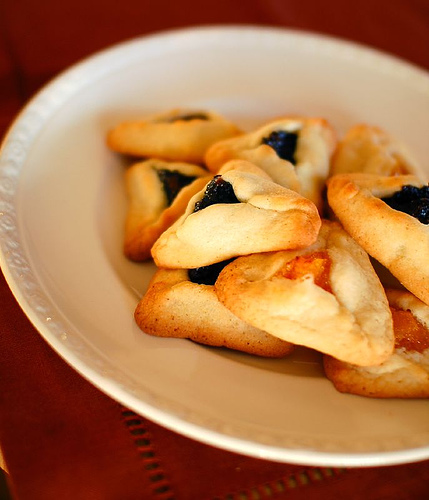

On Thursday, March 8, you might have seen a group of people running around campus in capes and masks offering triangular cookies to people who happened to pass by. For the majority of people at this college, this sight was probably confusing. One of the benefits of going to a college that is not entirely homogenous is having the opportunity to learn about different cultures and traditions from our peers. Here is a list of various holidays and traditions that you may be unfamiliar with if you do not practice the religion.
Purim, the Jewish holiday
The 8th of March, or according to the Hebrew calendar, the 14th of Adar, was the holiday of Purim. Way back when, a king of the name Ahasuerus supposedly married a Jewish woman named Esther. The king’s assistant, Haman, created a law that stated that all the Jews would be executed on the 14th of Adar. Esther’s uncle Mordechai learned of this plan and told Esther that she needed to tell King Ahasuerus that she was Jewish. Once she did, the king repealed the law, having Haman executed instead.
Purim itself is a festive day for the Jewish people where children dress up in costumes. The triangular cookies are called Hamentashen, and they represent Haman’s hat. Hamentashen are generally have apricot, raspberry or chocolate filling.
Ash Wednesday, the Christian holiday
During Ash Wednesday, the palms from the previous year’s Palm Sunday (the Sunday before Easter) are burned and placed on foreheads in the shape of a cross. It is representative of the idea that the body turns to ash but the soul lives on. When the priest puts the ashes on the forehead, he says, “Remember you are dust and to dust you shall return.” This marks the first day of Lent. During Lent, Christians must abstain from something they enjoy for 40 days as a representation of the 40 days that Jesus fasted in the desert before he died on the cross.
Holi, the Hindu festival
Holi, or the Festival of Colors, is a Hindu spring celebration most famous for the tradition of people throwing paint or colored powder on one another. The story behind the holiday centers around Prahalad, the son of the demon king, Hiranyakashyap. Prahalad’s loyalties were with the god Vishnu, as opposed to his father. Thus, his father ordered that Prahalad be executed by the king’s sister, Holika. Holika had been granted the ability to survive in flames, so she decided that she would execute Prahalad by holding him in her lap while she sat in a fire. However, she ended up burning to death while Prahalad survived, thus proving that good always triumphs over evil. Because the religious story has a happy ending and because Holi occurs at the beginning of spring, the holiday is generally a festive occasion.
Ramadan, Muslim month of fasting
Ramadan is the ninth month of the lunar Islamic calendar, and generally occurs around the summer time. During the day, Muslims refrain from eating, drinking, sexual intercourse and smoking. Ramadan is meant to teach patience, among other virtues and to bring individuals closer to God. The holiday of Eid Al-Fitr marks the end of Ramadan. Eid Al-Fitr is quite a happy day. It is forbidden to fast and gifts are given.
Passover, the Jewish holiday
Most people have heard of Passover, but many don’t know the story behind it. According to Jewish history, the Jews were slaves in Egypt. Then, God told a man named Moses to demand to the Pharoah that the Jews be freed. The Pharoah, of course did not agree to this. God then sent 10 plagues — ranging from locusts and blood in the water to darkness — onto the Egyptian people. When the Pharoah still would not budge, God sent the most horrific plague of all, the slaying of every family’s first-born son. The Jews put sheep’s blood on their doors, which the Angel of Death took as a signal to pass over their homes. In the end, the Jews escape Egypt. However, they do not have time to bake bread for the journey. They bring unleavened dough that gets baked by the son, creating matzah. This is the reason that Jews do not eat anything leavened during the eight days of Passover. Besides staying away from leavened products, the other main tradition that goes along with Passover is the Seder. This occurs on the first or second night of the holiday. It involves reading for a tradition book called the Haggadah and eating a large meal of symbolic foods.
Pioneer Day, the Mormon holiday
Pioneer Day takes place on July 24 and is generally celebrated in Utah. It marks the day when Brigham Young and a group of Mormon pioneers arrived in and settled Salt Lake City, Utah. Parades and fireworks are commonplace. Children play simple games that pioneer children may have played back in 1847. Some Mormons will reinact the events of the historical day by entering the city in handcarts or walking along portions of the Mormon Trail, the path that the pioneers took from Illinois to Utah.